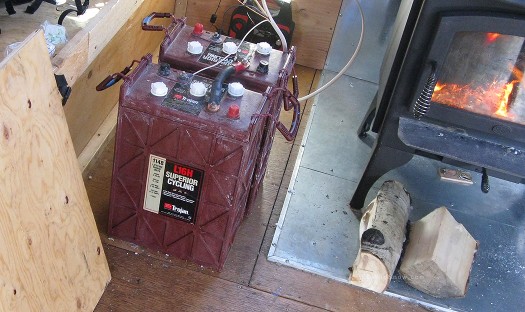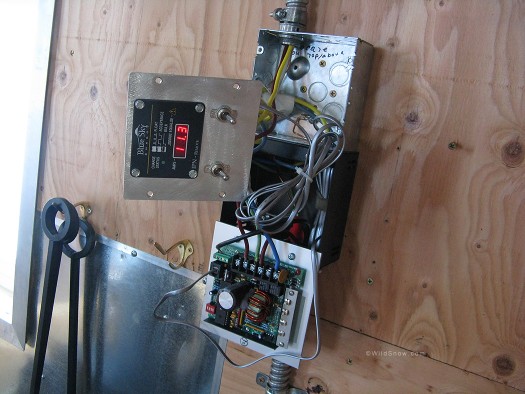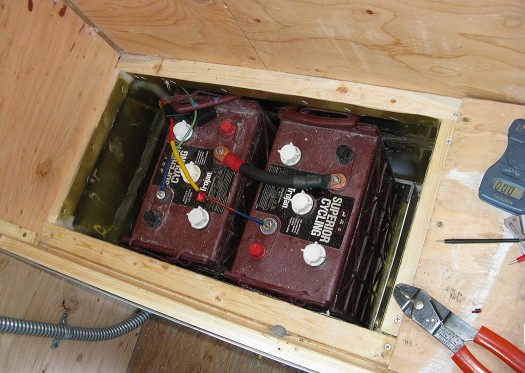Now the fun begins. Or is it? Yet another acronym for the challenged do-it-yourselfer: IANAE, I Am Not an Electrician. But, are not risk and challenge the spice of the alpine life, even if it means smoking wires and 300 volts where you wanted 12?
Honestly, I’m not that bad. But it’s amazing how complicated for the amateur a “simple” PV install can get when you try to do it right. Got started over the last few weeks, progress below:

Our pair of Trojan L16H lead acid batteries, in temporary hookup for maintenance charging. These guys weigh 125 pounds each, they're not exactly easy on the back! Rated at 420 amp hours each, when new.

The trick seems to be integrating the controller and digital display correctly with an exterior breaker box and the panels, along with solid and safe residential style wiring. When I fired things up yesterday, the readout showed my battery voltage, but I wasn't getting any juice from the control to the interior lights and such. Turns out the batteries are under the threshold for the controller's automatic shutoff. Time to hook something up to give them a boost. Perhaps we can get the panels going sooner than later. We'll see.

We don't have much sun in our location, so I bought two used (still with 7 year life) 6 volt larger sized Trojan batteries (connected in series for 12v) and opted to double up on our panel install. Pricey, but necessary. Instead of sealed batteries, these archaic units (probably invented by Egyptians a few thousand years ago) produce inflammable hydrogen when charging, so venting the battery box correctly is essential. Luckily, hydrogen floats so a vent at the top of the box tends to capture the evil photon farts -- though you have to be careful of back-drafting in a tight structure such as this. Experimentation and evaluation will take care of refining the vent issue.
Credit goes to Steve and Sunsense Solar here in Carbondale, Colorado for helping me though this process and making sure I had the parts and pieces. Shew, let’s hope the next report has some glowing light bulbs!
WildSnow.com publisher emeritus and founder Lou (Louis Dawson) has a 50+ years career in climbing, backcountry skiing and ski mountaineering. He was the first person in history to ski down all 54 Colorado 14,000-foot peaks, has authored numerous books about about backcountry skiing, and has skied from the summit of Denali in Alaska, North America’s highest mountain.
